In medicine, neck pain is called cervicalgia.According to the results of numerous screening tests, they occur throughout the year in 12-72% of people of working age.It means feelingsfamiliar to almost everyone.In 1.7-11.5% of people, cervicalgia eventually leads to disability.Let's look at their most common causes and treatment methods.
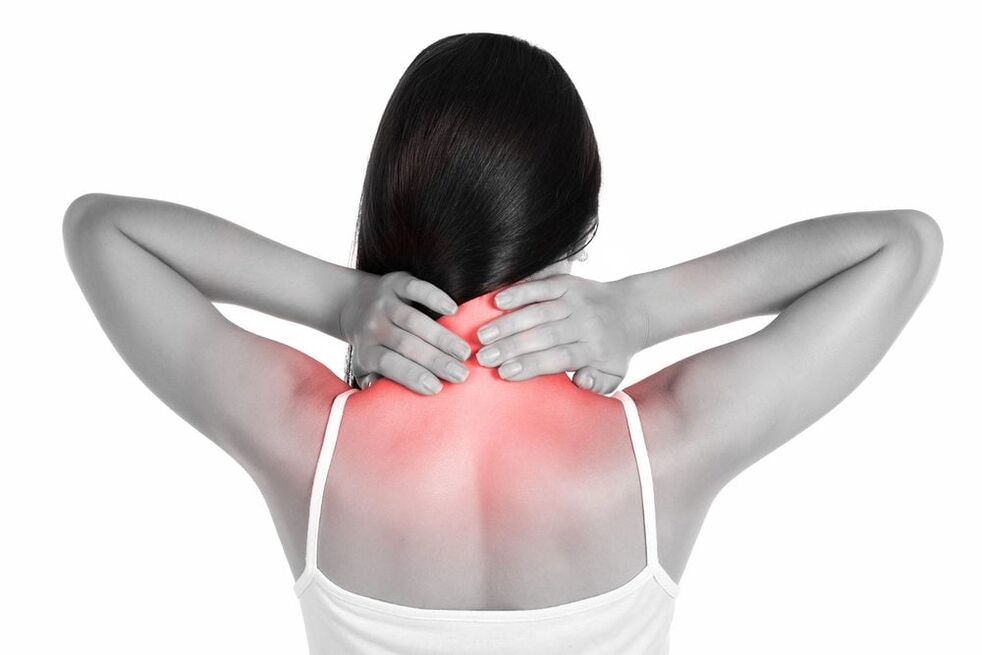
Classification of cervicalgia
All neck pain is divided into acute and chronic pain.The first ones arise suddenly and have a pronounced character.They usually occur after hypothermia, heavy physical activity or heavy lifting.Chronic pain bothers a person continuously for a long time.They are mild, painful, and worsen after prolonged sitting or sleeping in an uncomfortable position.
Depending on the locationpain can be visceral, somatic, superficial and deep.The first occurs due to damage to internal organs.Visceral (referred) pain can indicate a sore throat, diseases of the esophagus or pharynx, acute thyroiditis, dissection of the vertebral or cervical arteries.
As a result of injuries or minor scratches, superficial somatic pain appears, while deep pain is localized in the tissues.The cause of the latter is usually muscle strain or pathology of the spine.
How to distinguish visceral pain from somatic pain?The first ones are diffuse, that is, one cannot determine their exact localization: they radiate to other parts of the body, with nausea, vomiting, dizziness, fever, etc.
In 2008, the Neck Pain Working Group recommended the following:stages of cervicalgia:
- The patient has no symptoms that would indicate structural abnormalities.The person's daily activities are not limited and do not require further examination or treatment.Such cervicalgia disappears after minimal lifestyle correction.
- The person has no signs of severe structural damage to the spine or neck organs, but their daily activities are mildly impaired.Sometimes the patient needs a pain reliever.In order to prevent loss of working capacity, you need lifestyle changes and special exercises.
- The person has no signs of serious organ damage, but there are neurological symptoms.The patient needs further examination and comprehensive treatment of the identified pathology.
- The patient notices the appearance of signs of organic changes.He is concerned about severe neck pain, which is most often due to injuries, tumors, myelopathies, systemic diseases, etc.refers to.The patient requires a serious examination and special treatment.
Pain in the neck can be central and neuropathic.Cervicalgia of central origin occurs with meningitis, acute cerebrovascular accidents, head injury, increased intracranial pressure, and intracerebral tumors.Neuropathic pain is pinching of spinal roots, tunnel neuropathy, traumatic nerve injuries, polyneuropathy, multiple sclerosis, etc.is applying due to.
The main causes of neck pain
Neck pain can occur occasionally or it can bother you every day.Periodic cervical pain that occurs every few months is mostly harmless and does not indicate any pathology.They disappear quickly after adequate rest or the use of anesthetic ointment.
But constant aching or sudden severe neck pain is a serious concern.
Table 1. Main reasons
| They | The mechanism of pain syndrome development | Typical signs of pathology |
|---|---|---|
| Hard work or training in the gym | The formation of large amounts of lactic acid in the muscles.This substance causes pain | The pain appears the next morning after intense physical activity.The discomfort intensifies when you move your arms or turn your head.It will go away in a few days |
| Hypothermia | Development of neuralgia - pain in the innervation area of the occipital nerves | Usually the person has pain in the ears, neck and back of the head.In most cases, occipital neuralgia is unilateral: the pain appears only on one side |
| Psychosomatics | Formation of muscle blocks - spastic contractions of the muscles of the neck and shoulder girdle | A person has neck pain for no apparent reason.With a full examination, doctors cannot detect signs of damage to the spine or diseases of the internal organs |
| Abnormal biomechanics of the shoulder girdle | Disturbance of the normal functioning of the muscles of the upper limb girdle.Trapezius muscle strain and spasm | Slight limitation of movement in the shoulder and cervical spine.Aching pain that gets worse after prolonged sitting in the same position or physical work |
| Cervical osteochondrosis | The appearance of pathological changes in one or more spinal movement segments.Impairment of spinal mobility, development of myofascial pain syndromes and pinching of spinal roots | Pain, paresthesia and motor disturbances in the neck region, spreading to the back of the head and upper limbs.Detection of characteristic changes in the spine on MRI and X-rays (osteophytes, reduced vertebral distance, signs of damage to intervertebral joints) |
| Cervicobrachial radiculitis | Formation of an inflammatory process in the nerves forming the brachial plexus | Unilateral sharp pain radiating to the upper limb.The patient complains of a burning sensation and numbness in the hands and the back of the head.Unpleasant symptoms appear after hypothermia or heavy physical work |
| Acute thyroiditis | The formation of inflammatory or purulent foci in the thyroid gland, with the subsequent development of a pain syndrome | Sharp pain and swelling in the area of the thyroid gland.You may feel an enlarged, painful, nodular thyroid gland by palpation |
| Colds and infectious diseases | Inflammation of the mucous membrane of the pharynx, larynx, and trachea as a result of inhalation of cold air or infectious factors | Appearance of pain and sore throat, headache, runny nose, increased body temperature.General weakness, apathy, reduced ability to work |
| Burns of the pharynx or esophagus | Exposure of the mucous membrane to chemicals, high or low temperature with the further development of the inflammatory process | Severe pain along the esophagus that worsens when swallowing |
| Tension headache | Constant overstretching of the muscles of the shoulder girdle, frequent stress, depression | Aching diffuse pain in the head that radiates to the neck region |
| Subarachnoid hemorrhage | Irritation of the membranes of the brain by blood flowing into the subarachnoid space | Sharp pain in the back of the head, reminiscent of a blow to the head |
| Multiple sclerosis | Damage to the myelin fibers of the brain and spinal cord with further development of neurological symptoms | Sudden pain in the neck that radiates to the spine.The patient himself describes his feelings as an "electric shock". |
| Tumors of the spine, lungs, neck organs | Compression of tissues, nerves, or organs by a malignant tumor | Aching pain that lasts for a long time.If there are tumors of the pharynx or esophagus, a person has difficulty swallowing food |
| Inflammation of the lymph nodes | Development of an inflammatory process in the lymph nodes in response to infection, hypothermia, etc. | Painful sensations on the side of the neck.You may feel enlarged, painful lymph nodes along the sternocleidomastoid muscle. |
Overwork or hypothermia
If your neck hurts after training, physical activity or prolonged monotonous work, muscle tension is to blame.Intense physical activity leads to the formation of lactic acid, which causes severe pain.The discomfort disappears completely after 3-4 days.
Neck pain radiating to the ear can occur after hypothermia.As a result of the low temperature, neuralgia of the occipital nerve develops.The pathology is characterized by paroxysmal, shooting, burning pain in the back of the head.Pathology can be unilateral or bilateral.
Some people often have neck pain after sleeping.This may be due to the wrong pillow choice.However, painful sensations can also indicate cervical osteochondrosis.Therefore, if your neck hurts after sleeping, change your pillow first.If the pain does not go away, you should go to a traumatologist or vertebrologist.
Psychosomatic pain
If your neck constantly hurts for no apparent reason, it may be due to psychosomatics.Muscle blocks can occur due to suppressed emotions, stubbornness and one-sided thinking.People suffering from psychosomatic cervicalgia regularly feel pain and tension in the muscles of the cervical spine, but doctors cannot reveal the cause of this phenomenon even after a thorough examination.
Recent scientific research has established a correlation between personality characteristics and the occurrence of vertebrogenic cervicalgia.As it turned out, increased anxiety and aggressiveness contribute to the development of cervical osteochondrosis.The revealed relationship can be used for more effective treatment of shoulder and neck vertebrogenic pain in people suffering from neurosis or neurosis-like diseases.
Violation of the biomechanics of the shoulder girdle
The cause of pain in the neck and shoulders may be improper functioning of the muscles of the shoulder girdle.Functional weakness of the deltoid and overloading of the trapezius lead to the appearance of myofascial trigger points, which cause the development of pain.At first, the neck muscles hurt, but over time, organic changes develop in the spine.
Incorrect distribution of the load on the muscles of the shoulder girdle is a common cause of cervicalgia.It is necessary to eliminate the cause of pathologies, that is, to restore normal biomechanics in the belt of the upper limb.To achieve this, you need to carefully monitor your posture and perform special exercises.
Osteochondrosis of the spine and its complications
Do you have constant pain in your neck and spine between your shoulder blades?This may be a sign of the development of osteochondrosis of the cervical spine.The pathology is characterized by the gradual destruction of the nuclei of the intervertebral discs, followed by the development of protrusions, hernias, spondyloarthrosis and cervical spondylosis.
Typical symptoms of osteochondrosis:
- pain in the neck muscles, collar area;
- numbness in the back of the head;
- limited mobility in the cervical spine;
- sensory disturbances in the upper limbs;
- slight weakness in the arms;
- tinnitus, frequent dizziness, headache.
A person suffering from osteochondrosis has pain not only in the spine but also in the neck area.Myofascial pain syndromes develop due to reflex muscle tension.They are characterized by the appearance of pain, paresthesia and numbness in the muscles of the back, shoulder girdle and upper limb.
In the initial stage, osteochondrosis is detected using MRI.Later, the pathology can be diagnosed using radiography.A decrease in the distance between the vertebrae, pathological changes in the facet joints, and osteophytosis can be noticed on X-rays of the cervical spine.
Many people complain that they cannot turn their neck due to severe pain that occurs when they suddenly lift it.This phenomenon indicates the development of a herniated disc.The cause of pain in the back, neck and upper limb is pinching of one of the nerve roots exiting the spinal cord.
Cervicobrachial radiculitis
The disease is characterized by inflammation of the spinal nerves involved in the formation of the brachial plexus.The inflammatory process can be caused by acute poisoning, hypothermia, nerve root pinching by spasmodic muscles,intervertebral hernias or osteophytes.
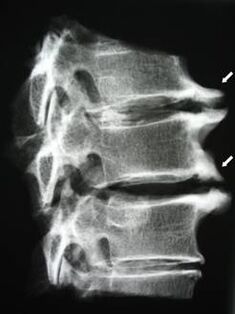
People with sciatica experience severe pain in the neck, back of the head, shoulders and even the upper limbs.Painful sensations occur acutely and are of a burning nature.Many people complain of numbness in the back of the head, crawling on the arm, sensory and movement disorders of the upper limb.
What to do if your neck hurts, it hurts to turn your head, it's hard to move your arm?You should see a doctor immediately.Cervicobrachial radiculitis requires serious treatment that you cannot take care of yourself.
Thyroid diseases
Most thyroid pathologies are not accompanied by pain.And only people with acute thyroiditis (inflammation of the thyroid gland) have pain in the front of their neck.Patients also experience an increase in body temperature, chills, general weakness, body aches and other signs of poisoning.On closer examination, you may feel an enlarged and painful thyroid gland.In some cases, there are multiple dense infiltrates.
Many people have neck pain after a diagnostic thyroid injection.The discomfort persists for several days.The cause of the pain is damage to the soft tissues during the procedure.
Inflammatory diseases of the neck organs
In inflammatory diseases of the pharynx and larynx, people often have a sore throat and the lymph nodes in the neck become inflamed.Pathology can be caused by hypothermia, infections, consumption of low-quality alcohol or accidental contact with the mucous membrane of chemicals.Damage to the pharynx, larynx, or esophagus is indicated by neck pain that worsens when swallowing.
Diseases causing neck and throat pain:
- pharyngitis;
- laryngitis;
- angina;
- diphtheria;
- infectious mononucleosis;
- scarlet fever;
- epiglottitis;
- pharyngeal abscess;
- chemical burn of the esophagus.
The throat and the side of the neck most often hurt when you have a cold.The causes of the disease are hypothermia, sudden inhalation of cold air or long walks in the cold.Good rest, warm tea and some painkillers will help you cope with the disease.
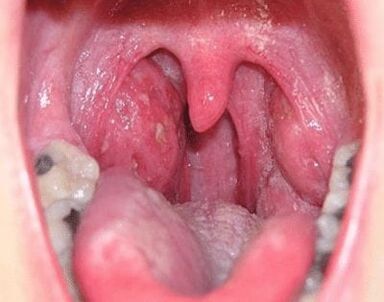
If you have a sore throat in the lower part of the neck, you should suspect pharyngitis or tracheitis (inflammation of the larynx or trachea).The development of diseases is provoked by viral infection, inhalation of hot, cold or polluted air.If the throat and the back of the neck hurt, a retropharyngeal abscess is possible.The pathology is characterized by fever, difficulty swallowing, loss of appetite, general weakness and apathy.
Damage to the central or peripheral nervous system
Severe pain occurs with subarachnoid hemorrhages.The person himself describes them as "hitting on the head" and throbbing in the back of the head.The patient has symptoms of nausea, vomiting, confusion and meningitis.Neck stiffness develops about 6 hours after the first pain.
Meningitis has a similar clinical picture..A person with meningitis has a very severe neck and headache.Painful sensations increase with movement.During the examination, tension in the patient's occipital muscles is detected.Because of this, a person cannot pull his chin to his chest even with external help.At the same time, a characteristic rash appears on the patient's body.
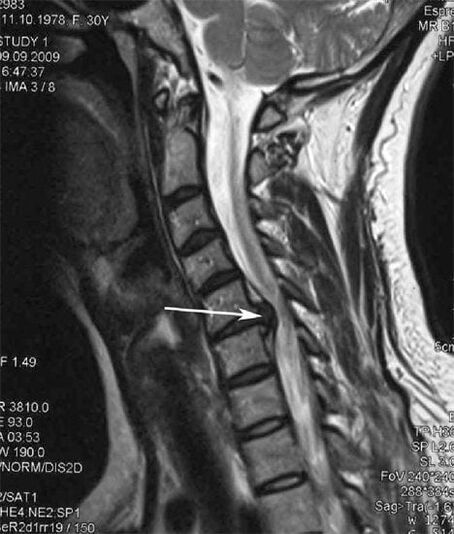
Neck pain is caused by damage to the spinal cord or peripheral nerves, central nervous system tumors, demyelinating diseases, etc.can causeAll these diseases have a polymorphic clinical picture, and pain is one of the symptoms of the pathology.
Back and spinal pain can be an early sign of multiple sclerosis, a demyelinating disease of the central nervous system.People with this pathology develop the so-called Lhermitte syndrome.It is characterized by a sensation of electric shock in the back of the head that occurs when the head is tilted forward.
Malignant or benign tumors
Various tumors of the cervical spine, pharynx, esophagus, thyroid gland or other organs can also cause pain.Pain may also occur in patients with Pancoast cancer, a malignant tumor located subpleurally at the apex of the lung.
Muscle damage
In some cases, the lateral neck muscles hurt in patients with myositis, polymyalgia, and fibromyalgia.These diseases are characterized by damage to any part of the skeletal muscles.If someone notices tenderness in the lateral neck muscles for no apparent reason, they may have one of these diseases.
If you have pain in the muscles in the front of your neck near your larynx, think about whether you recently had to shout loudly, sing loudly, or talk for a long time.Then the cause of the discomfort is the overstretching of the vocal cords.
Other possible causes of cervicalgia
Pain on the left side of the chest and collarbone, extending to the neck, usually indicates heart disease.Patients with a similar pain syndrome may experience angina pectoris, arrhythmias, heart failure or heart attack.
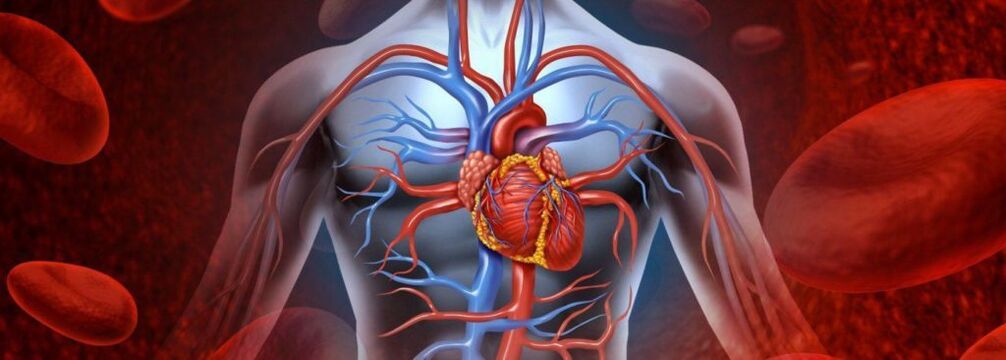
The side of the neck may hurt for people with tooth decay, oropharyngeal or nasopharyngeal disease.Unpleasant sensations may occur with tonsillitis - inflammation of the tonsils.If pain is noted in the shoulders near the neck, it may be the result of scoliosis of the cervical and/or thoracic spine.
Why do the lymph nodes on the neck hurt?
The cervical lymph nodes are located on the side of the neck, along the sternocleidomastoid muscle.They are usually small in size and difficult to feel.However, in some cases, the lymph nodes in the neck may become enlarged and painful.This phenomenon should be worrisome, as it can indicate serious diseases and even malignant tumors.
Most often, pain in the neck lymph nodes occurs due to their inflammation (lymphitis).The pathology develops against the background of tonsillitis, rhinitis or an acute respiratory viral infection.This can be caused by damage caused by metastases of tumors of the pharynx, esophagus, lungs or other organs.
Symptoms of cervical lymphadenitis:
- enlarged lymph nodes.In some cases, their size can increase to 2-3 or more centimeters;
- appearance of hyperemia and edema.Lymphadenitis is usually accompanied by redness and swelling in the area of the inflamed lymph nodes;
- painful feelings.A person has pain in the ear and neck on one or both sides.It may be difficult for the patient to turn the head and perform active shoulder movements;
- symptoms of poisoning.Body temperature rises, chills, general weakness, apathy, headache appear.Poisoning phenomena appear in the acute form of lymphadenitis.
Neck lymph nodes can become inflamed after staying in a draft for a long time.Most often, the pain is felt in the ear and under the ear on the neck.The patient may feel slightly enlarged and painful lymph nodes under the skin.
Are the lymph nodes in your neck swollen and painful, but you don't know what to do?It is best to see a doctor immediately.The specialist will thoroughly examine you and prescribe further tests.After conducting the necessary tests, you can find out the cause of the pathology.
The head and neck are the most common causes of pain
According to statistics, 70% of people with frequent headaches (cephalgia) have pain not only in the head, but also in the neck region.Cervicalgia can be caused by irradiation of painful sensations or be vertebrogenic in nature.Many men and women with osteochondrosis have neck pain that radiates to the head.15-20% of all headaches are cervicogenic in nature.
Reasons why a person has pain in the neck, head and temples:
- overwork;
- impaired blood circulation in the brain tissue;
- diseases of the cervical spine;
- inflammation of the sinuses;
- hypertension;
- heart disease;
- menopause period;
- migraine;
- overstretching of the muscles of the shoulder girdle.
The most common type of cephalalgia is tension-type headache (TTH).It occurs due to mental stress, heavy mental activity or prolonged spasm of the muscles of the neck, back and upper limbs.Neck massage, reflexology and short-term use of painkillers can help with tension headaches.
If you often suffer from neck pain and dizziness, do not hesitate to seek treatment.Massage of the neck and collar area and acupuncture can help deal with tension-type headaches.If you still feel pain after a massage treatment, you need a full examination.Perhaps a serious problem is hidden behind a banal headache.
What is the cause of a child's neck pain?
A sore throat in a baby occurs with sore throat, acute respiratory viral infections, rubella, mumps, meningitis and some other infectious diseases.If the child's neck hurts on only one side, it may be caused by otitis media, retropharyngeal abscess, lymphadenitis or trauma.
When talking about childhood diseases, torticollis should be mentioned.The pathology is characterized by congenital shortening of the sternocleidomastoid muscle.Due to the error, the baby's head is in a forced position.It turns continuously upwards and in the opposite direction to the faulty muscle.A child with torticollis also has neck pain.The main reason for this is constant muscle tension.
What should I do?Grab the baby immediately and go to the hospital.Timely medical help helps to identify the problem in time and start treatment.
Which doctor should I see?Best to go to the pediatrician first.After the examination, the pediatrician makes a diagnosis and prescribes treatment, or sends you to a specialist consultation.
How to relieve acute neck pain
Some people complain after hypothermia or lifting heavy objects: "My neck hurts, I can't turn my head...".This symptom indicates acute inflammation of the spinal roots or neuralgia of the occipital nerve.If such pain occurs, always consult a doctor.
You can use tablets, gels or plasters to relieve the pain.In this case, it is best to use nonsteroidal anti-inflammatory drugs, corticosteroids, or warming ointments.Dry heat (a heating pad, a bag of heated sand or grain) also has a good effect.
Not sure which doctor to see if you're experiencing excruciating neck pain?Since such cervical pain usually indicates inflammation or pinched nerves, it is best to consult a neurologist immediately.Prescribes appropriate treatment and, if necessary, performs drug blockade.Injectable corticosteroids can relieve pain quickly and effectively.
How to treat vertebrogenic neck pain
Neck pain is treated by an orthopedic traumatologist or vertebrologist.After injuries and operations in the neck region, doctors prescribe the patient to wear a Shants collar.Analgesics and muscle relaxants are used to relieve pain.In order to relieve muscle spasms and restore the normal biomechanics of the shoulder girdle, experts recommend a series of exercises.Therapeutic gymnastics makes it possible to develop the muscles and restore the normal mobility of the spine.
What kind of doctor should you see if your neck hurts during pregnancy?First of all, you need to visit the treating gynecologist.He will examine you and send you to a specialist for consultation, who will prescribe appropriate treatment.



































